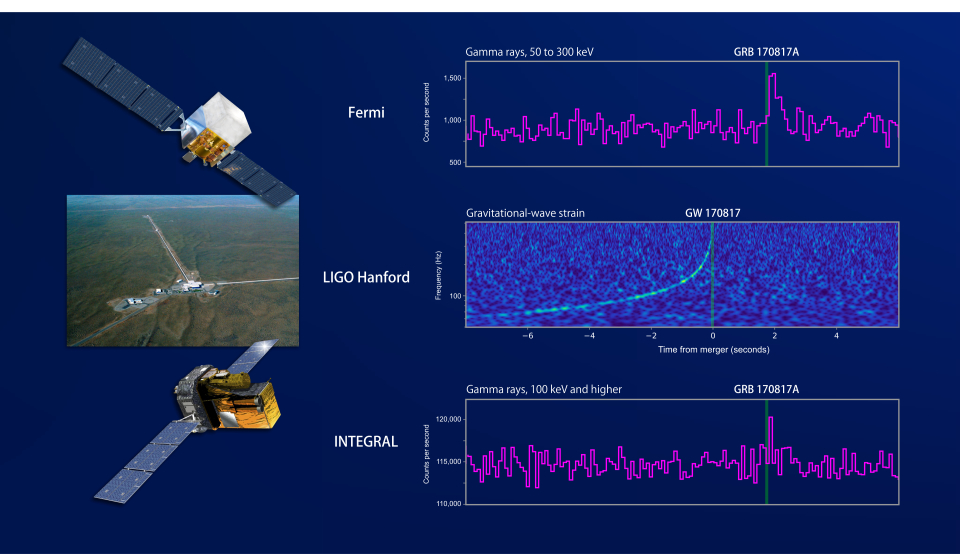MultiMessenger Astronomy

On 2017 August 17, multi-messenger astronomy was born.
At 12:41, a gamma-ray burst and a gravitational wave were detected less than two seconds apart. It was immediately realized that this was the outcome a binary neutron star merger. Less than twelve hours later, an optical transient was detected in NGC 4993 and it was identified as a kilonova produced by the ejcta of the merger. Nine days later, an X-ray afterglow was found and thre days after, a new radio source, all at the very exact location.
For the first time, an astrophysical phenomenon manifested itself through different observing channels.
A specialized focus was published on Astrophysical Journal Letters.
A list of papers is available at www.kilonovae.org.
A presentation made at the Department of astronomy is available.
Outreach
ESA made a press release describing INTEGRAL contribution.
The University of Geneva made a Press release.
Swiis television highlighted it in the news.
Multi-messenger astronomy with INTEGRAL
Talk at the 2020 Cospar Assembly
